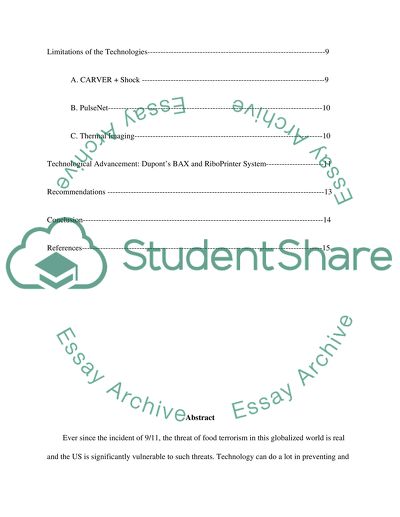Technology--the solution to prevent terrorism in the US food system Coursework. Retrieved from https://studentshare.org/miscellaneous/1658491-technology-the-solution-to-prevent-terrorism-in-the-us-food-system
Technology--the Solution to Prevent Terrorism in the US Food System Coursework. https://studentshare.org/miscellaneous/1658491-technology-the-solution-to-prevent-terrorism-in-the-us-food-system.


